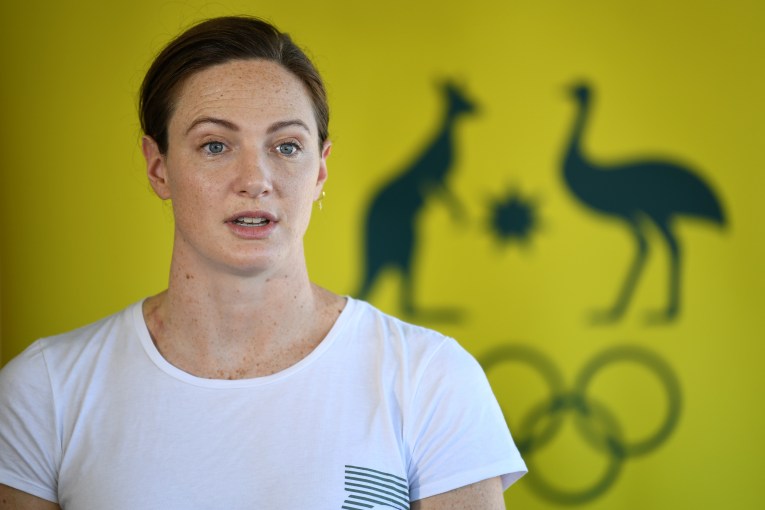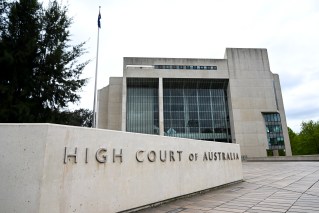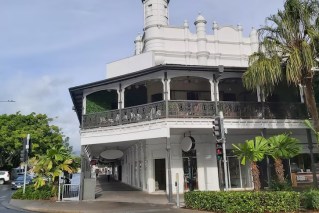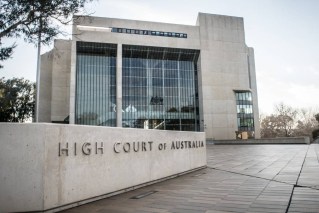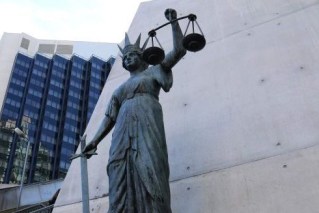Cyclone and earthquakes to the north of us, heatwaves and bushfires to the south
Multiple states are on high alert for bushfires with scorching conditions forecast ahead of the weekend while Cyclone Jasper intensifies into a Category 4 storm and our northern neighbours in Vanuatu and New Caledonia have suffered a major earthquake.

Tropical Cyclone Jasper has intensified into a category 4 system as it moves toward the Queensland coast, posing a looming threat to communities between Mackay and Cooktown.
The storm system is the first tropical cyclone to form in Queensland waters in December in an El Nino year.
Jasper was about 1250km east northeast of Cairns at 4am (AEST) on Friday and moving south across the Coral Sea at 10km/h, the Bureau of Meteorology said.
Over the weekend Jasper is likely to weaken while also turning west towards the Queensland coast.
“While the timing of a coastal impact remains highly uncertain, the highest risk of a cyclone impact lies between Cooktown and Mackay, including Cairns and Townsville,” the bureau said in a cyclone update.
“As Jasper approaches the coast there is a risk of re-intensification and the potential for severe impacts.”
Senior meteorologist Laura Boekel has warned the coastal region directly impacted by the cyclone may not be the only area affected.
“It may impact further away from where it is crossing,” she said on Thursday.
“We can see large impacts from tropical cyclones, especially when it comes to rainfall and flooding.”
She said potential cyclone affects included storm surges causing coastal flooding, damaging or destructive winds and heavy, widespread rainfall.
The bureau is issuing regular updates to keep communities informed.
Australia’s cyclone season is usually from November to April, typically peaking in Queensland in February and March.
Meanwhile, a tsunami warning for the coasts of Vanuatu and New Caledonia has passed, the US Tsunami Warning System says, after an earthquake of magnitude 7.2 struck the Vanuatu region.
It earlier said that hazardous tsunami waves from the earthquake were possible within 300km of the epicentre along the coasts of Vanuatu and New Caledonia.
The United States Geological Survey (USGS) measured the earthquake at 7.1 magnitude, with a depth of 48km.
The Joint Australian Tsunami Warning Centre said there was no tsunami threat to the Australian mainland, islands or territories.
To our south, a trifecta of dangerous weather conditions has prompted extreme to catastrophic danger alerts to be issued for parts of South Australia.
The Country Fire Service warned Friday would be “one of the most significant fire weather days in several years”.
It comes as high or extreme fire danger is predicted in most of NSW, where heatwave conditions are due to continue for days.
Adelaide hit 29.6C before 7am on Friday, as temperatures across the state head towards the mid-40s.
Strong winds and dry lightning are also adding to the fire risk.
Catastrophic fire danger ratings was declared for the mid-north, Flinders, Yorke Peninsula, Riverland and eastern Eyre Peninsula districts, while five regions face extreme fire danger.
Any fires that did start would be “incredibly difficult” for firefighters to control, CFS chief officer Brett Loughlin said.
“The dry lightning creates a real risk of fire starting anywhere these thunderstorms occur, unfortunately the forecast is a broad area of dry lightning and thunderstorm activity,” he told reporters on Thursday.
The service secured a large air tanker from the Commonwealth to help with firefighting operations, but Mr Loughlin said conditions could hamper its use.
“I want to stress, the forecast winds tomorrow are such that there is likely to be times when an aircraft will be unable to safely fly and fight fires,” he said.
“It is crucial that people do not rely on firefighters and aviation assets to save them.”
Residents were urged to have a bushfire survival plan in place and to understand what they would do in the event of an emergency.
Electricity outages are also possible as equipment is set to disconnect to minimise the risk of sparking a blaze.
After Friday’s heat, temperatures will dip to the low to mid-20s across much of SA on Saturday, with Adelaide forecast to have up to 60 mm of rain over the weekend.
A total fire ban is in place for several NSW areas west of the Divide for Friday, ahead of even warmer conditions on Saturday, when Sydney’s west could hit 44C.
Meanwhile, the mercury didn’t dip below 30C overnight in the outback town of Wilcannia as it sweats through a forecast 10-day streak of 40C days.
High temperatures sparked a warning to employers to protect their workers and develop a workplace heat-management plan to ensure safety.
“We don’t want to see anyone needing medical attention due to heat exposure,” SafeWork NSW head Trent Curtin said on Friday.
“Workers are reminded to listen to their body when the temperature rises and to drink plenty of water.
“It is vital you do not replace water with soft drinks, energy drinks or coffee as these can dehydrate you further. ”
Unsafe practices can be reported in NSW via the Speak Up Save Lives app.
Parts of Queensland, West Australia, the Northern Territory and ACT have also copped soaring temperatures that are expected to intensify over the weekend.
